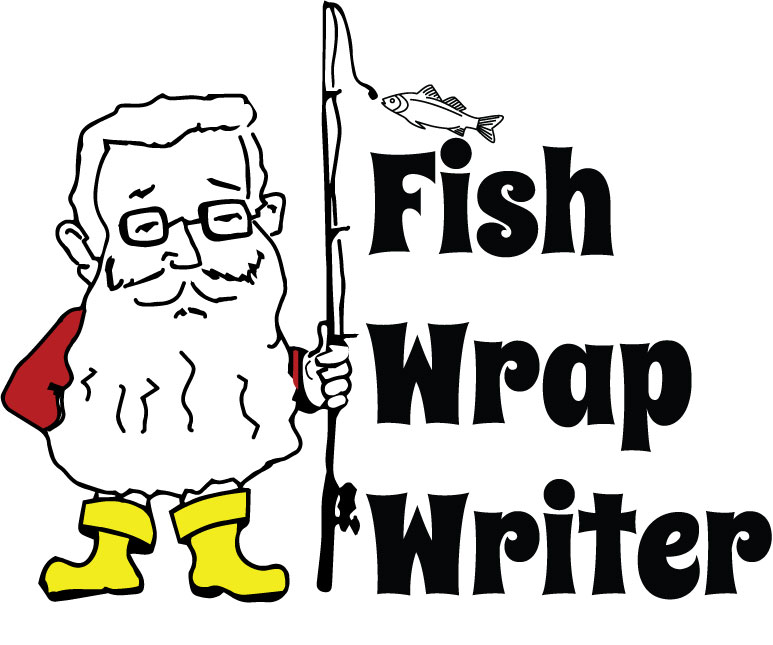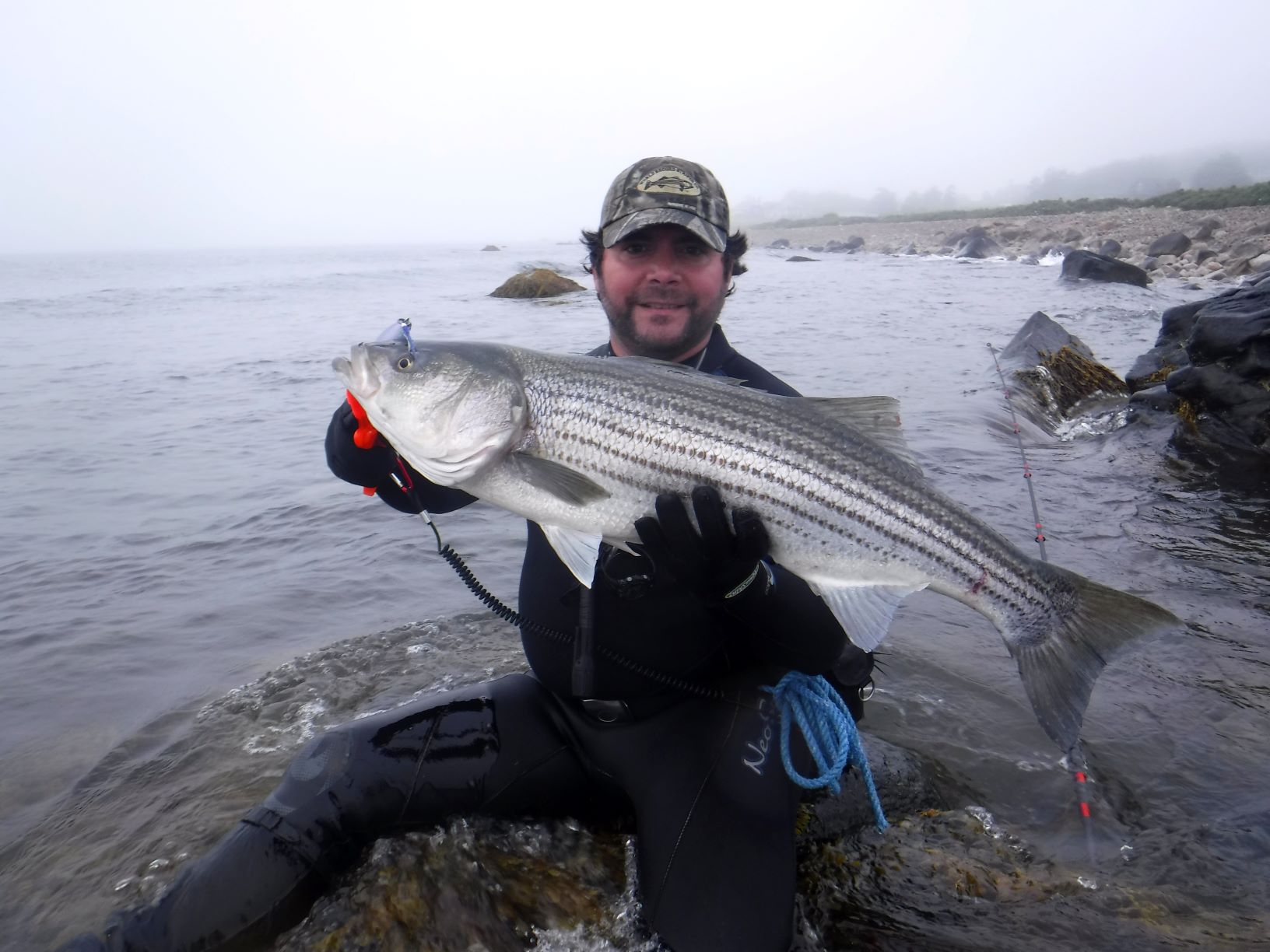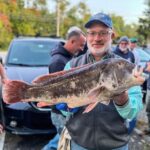Talking Surfcasting Will Ward Off Winter Blahs
It’s winter. Hunting season is pretty much done, salt ponds are frozen and my desire to fish is slushy at best. The snow keeps coming, making the garage door that much harder to open, which is a fine excuse to not lower the Eddyline kayak and go searching for holdover stripers. Winter can be the longest season but it does provide some cover to those of us who could use a break. So spread some salt on the walkway instead of shoveling and take in some off season outdoors tips, like Julio Silva offering surfcasting tips to find striped bass.

“Time is fish”
Since we can’t go see him speak in person for a while, here are a few of his tips to catch stripers. He prefers St. Croix Mojo Surf rods, conventional reels for chunking and Van Staal or ZeeBaas spinning reels for casting. The latter can cost $800 but he feels that’s money well spent. And Dave Morton at Beavertail Road and Reel can maintain or fix anything, so there’s that. He only fishes with braid. “I like Power Pro; good value good performance, it has never failed me.” For leaders, he fishes mono only. Clear pink and green are his go-to line colors. Once a fish has fallen for his rig, he changes leaders so he uses a clip on both ends to save time attaching a new one. “Time is fish” he’s apt to say.

Perhaps not the best look for surfcasting but Silva does find the fish, despite the kilt
Silva walked us through his enormous collection of plugs in all configurations of sizes, colors and weights but he was quick to offer the right conditions for all of them. Roberts Rangers for fish an any conditions, spooks for their classic zig-zagging motion and because Julio believes they aggravate even stripers with full stomachs, Sea Fly’s in calm water, bottle poppers at light transition times, pencil poppers because they are “a casting machine,” darters because, “by far, pure scientific fact, the darter is the most versatile plug” and Go Go eyes to swim deep.
“The most poorly understood plug is a needlefish,” he said. Too many varieties and sizes apparently. He’s a fan of High Hook 15” needlefish but they don’t really fit in a standard surf bag, which means you need to visit his website at www.fish360.net to take in some of his DIY tips to modify your surf bag or car, for that matter. One new favorite is the bottle darter, a darter/ bottle swimmer hybrid that’s already a proven attractor for big bass. He shared several ways he modifies plugs for his own conditions and he ties his own teasers and bucktails because Julio Silva is a wealth of fishing knowledge and clearly is happy to share it all.
Next month, the always entertaining Charlie Soares will talk Tips, Tactics and Techniques for Successful Striper Fishing. That night is not to be missed so bring a notebook and pen to record a little piece of all Charlie has to share. If you’re interested in upcoming seminars, you can join RISAA at www.risaa.org.
RIDEM has muchto offer in the off seasons
RIDEM’s Division of Fish & Wildlife is hosting some outreach events called “Seasonal Wildlife Solution Sessions” with a goal of helping us outdoors people and those a tad more in-doorsey, learn about coexisting with native animals. They will highlight some typical interactions with some words of wisdom for how to handle and even enjoy those moments. If you have ever watched one of Elise Torello’s wildlife camera videos, where fishers, bobcats, deer, raccoons, coyotes, turkeys and the occasional great blue heron stalk, feed, rest and even enjoy an occasional scratch that itch moment, they are well worth finding on social media because they are actually in her backyard. According to RIDEM, “Each of these sessions will cover the life history of the focal species, rules and regulations, solutions, and research being done in our state, and will include a dedicated time for questions.” In a hopeful nod to an ending masks and bathing ourselves in sanitizer, they are offering some sessions virtually; some we can only hope will be in a library or at picnic tables.
“Rhode Island is a small state and as the population grows, wildlife habitat will overlap with our backyards, and we will gain new wild neighbors. These sessions will arm homeowners with the knowledge they need to feel safe and comfortable solving wildlife issues that commonly arise,” said DEM Technical Outreach Assistant Gabby De Meillon. Your next opportunity to take in some outreach will be on Wednesday, April7 from 6 pm to 7:30pm and they will be talking Black Bear Basics.
“American black bears disappeared from Rhode Island and much of New England following colonization, but with populations in surrounding states growing, Rhode Island will soon see their return. Already, black bear sightings are becoming more frequent and concerns about encounters are common. If communities can come together and integrate bear-conscience strategies, we can avoid problems with bears in advance of their establishment. This session will address what to do when encountering a bear, how to avoid drawing bears to your yard, and present the results of the DEM American Black Bear Study,” DeMeillon said.
After that, creatures covered will include “Vegetable Vandals: Rabbits, Groundhogs and Deer” then “Noisy Neighbors: Bats and Squirrels.” If you’re dreaming of getting back into your garden and digging compost out of your fingernails, surely you’ll recall the damage rabbits and groundhogs can wreak on all your hard work.

So cute and so damaging. Photo by Kelly D Brown
Getting help to keep them out while not falling afoul of the law is worth the price of admission, which is free. Register by emailing Gabrielle.Demeillon@dem.ri.gov.







0 Comments